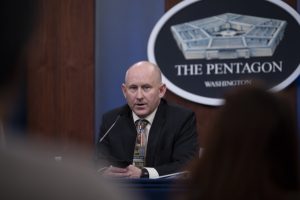
The acting secretary of the Army said Monday he would like to see the service receive some of the funds that are potentially freed up as a result of the withdrawal from Afghanistan, while cautioning that its difficult to predict just how much money will actually be available for reallocation. John Whitley, who previously served as the Army’s comptroller, noted that estimates for follow-on costs related to withdrawal operations often tend to be higher than expected. “If the plan goes…

 By
By 











